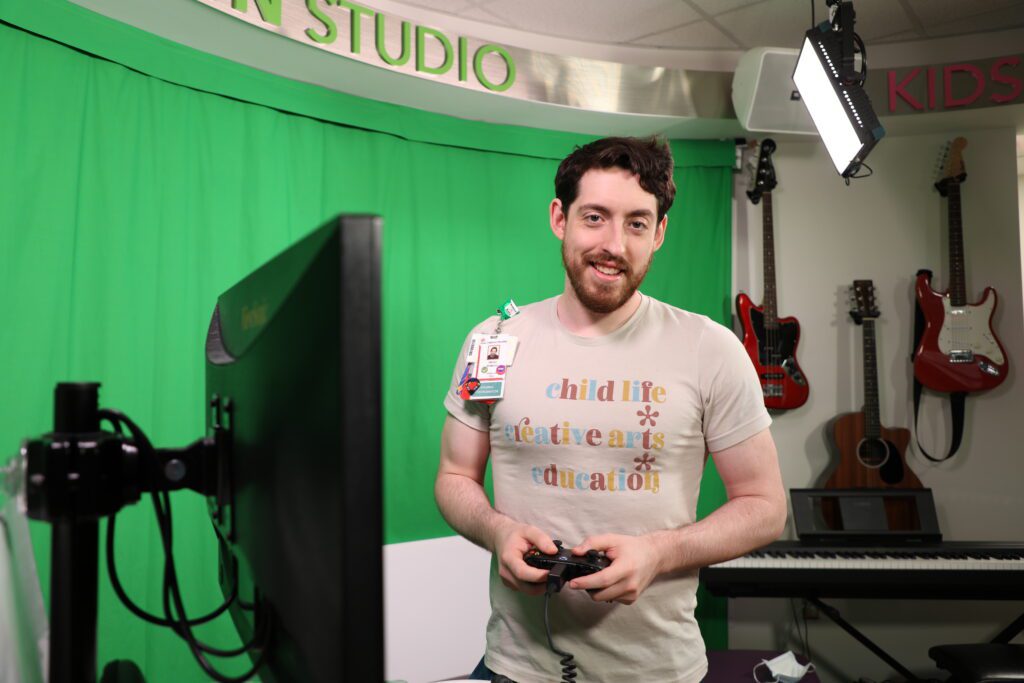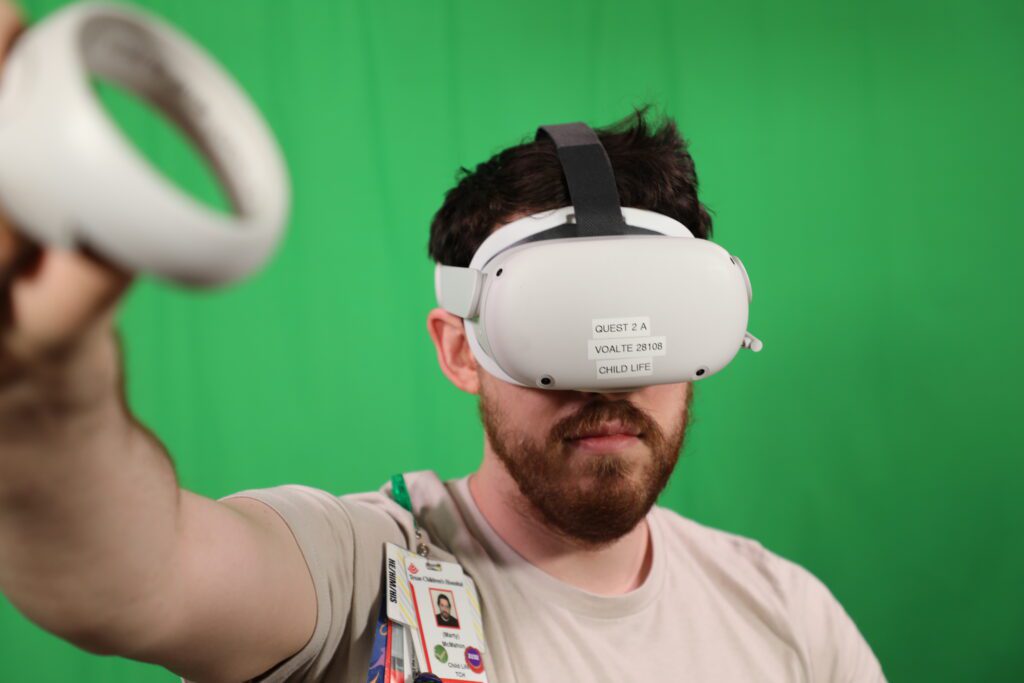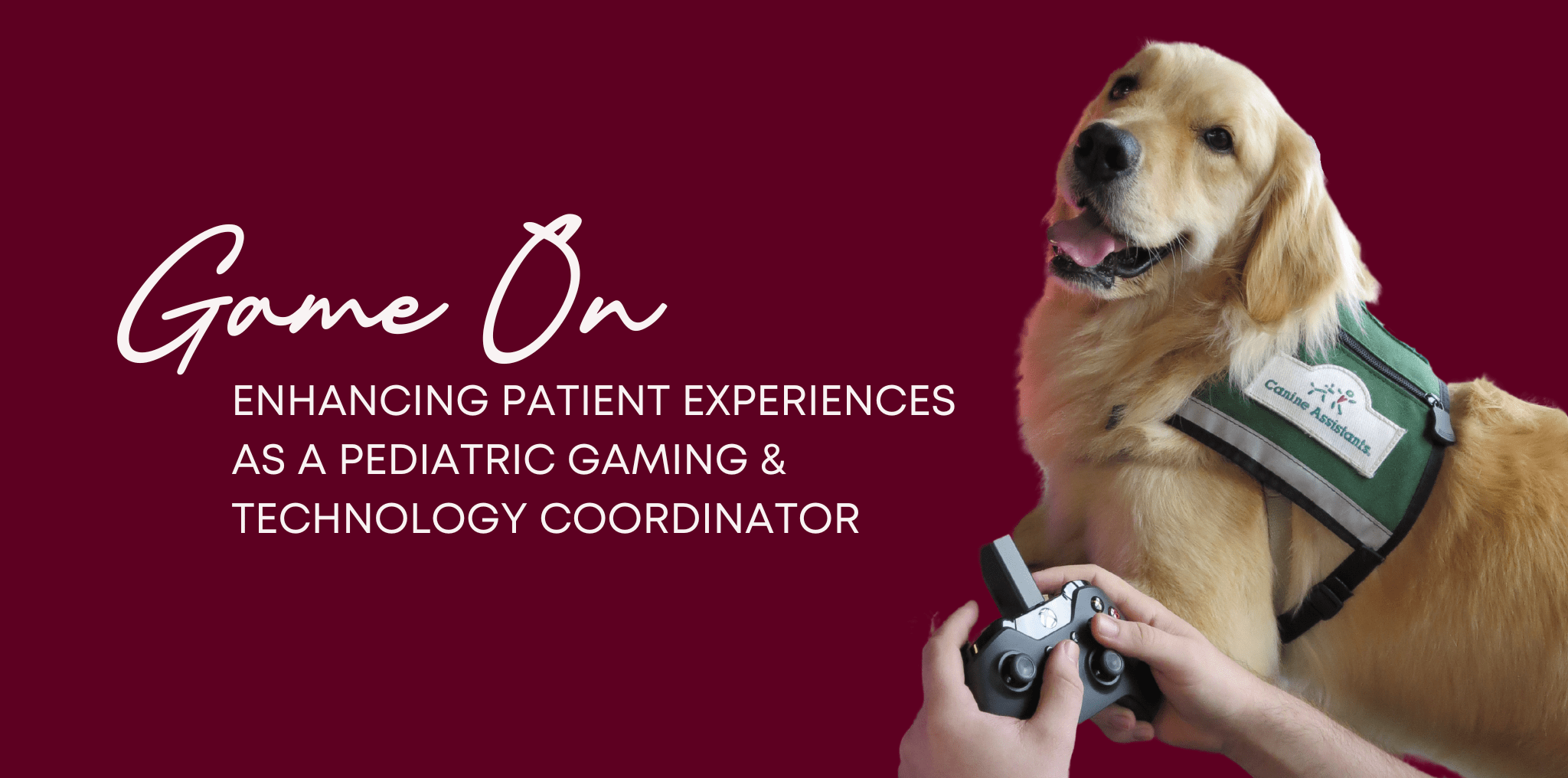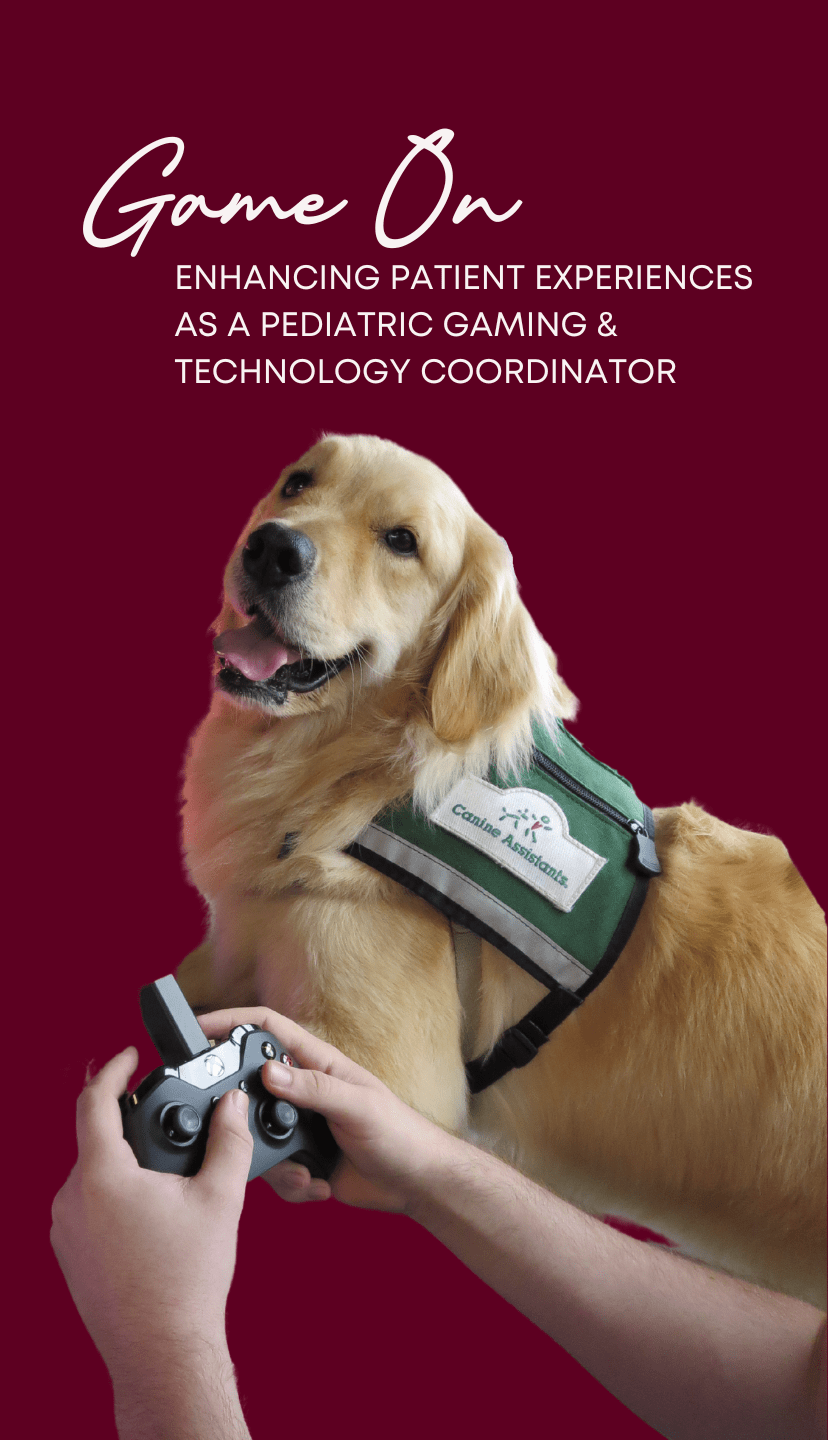Game On: Enhancing Patient Experiences as a Pediatric Gaming and Technology Coordinator
Because gaming and technology are an important part of kids’ daily lives outside hospitals, patient technology and pediatric gaming are growing fields inside children’s hospitals.
Over 70% of American kids and teens play video games, according to the Entertainment Software Association. At Texas Children’s Hospital we are committed to finding unique ways to create great experiences for our pediatric patients. Video games and technology are an increasingly important part of our Child Life team’s diverse and innovative approach to patient care.
As Patient Technology Coordinator, Marty McMahon is leading the charge. He uses video games and technology to support patients’ emotional, developmental, psychosocial and physical needs throughout their hospitalization. During playroom, group and bedside sessions, Marty engages patients with IRL (in real life) and virtual technology to promote normalization and socialization. As you might imagine, his impactful work is a hit with patients at Texas Children’s.
What is a Patient Technology Coordinator?
Patient Technology Coordinators are specialists in pediatric gaming and technology. In addition to gaming with patients at the bedside, they create immersive experiences using a variety of platforms and technologies.
Their expertise extends beyond entertainment, strategically employing virtual reality, augmented reality, and traditional gaming to encourage patients to get out of bed and engage in daily physical activity. Collaborating closely with medical staff and the IT department, they ensure seamless integration of technology into patient care protocols and educate clinicians on the benefits of gaming for patients’ overall healing and well-being.
Patient Technology Coordinators are also instrumental in managing and optimizing technology to enhance the overall patient experience. From ensuring the functionality of devices to providing technical support and customization, their role is integral in creating a supportive and engaging environment for patients during their hospital stay.

Leading in Patient Technology
Marty holds a bachelor’s degree in Game Art and Design from the Art Institute of Pittsburgh. After years working on independent projects in the gaming industry, he was introduced to Child’s Play Charity, an organization endowed by the gaming community and devoted to improving the lives of children and teens in children’s hospitals
Thanks to funding from Child’s Play, Marty joined our team in 2018 to improve the patient experience with gaming and technology integration. Texas Children’s was among the nation’s first children’s hospitals to level up and create a role dedicated to gaming activities.
Marty regularly collaborates with other activity coordinators and child life specialists in all areas of our Medical Center and provides insight and support to The Woodlands, West and North Austin campuses to develop programming that fosters socialization and engagement among children. His initiatives are seamlessly integrated into patients’ treatment programs, with all interactions recorded in our EPIC system, ensuring comprehensive documentation and coordination among Texas Children’s health care professionals.
“Having a Patient Technology Coordinator on our team brings a unique expertise that expands our ability to connect with patients,” says Jill Mendez, Texas Children’s Manager of Clinical Support Services. “Marty helps our patients have experiences that are accessible and catered to their interests. The continued expansion of adaptive gaming and technology opportunities is exciting for the patients we serve.”
The Impact of Gaming on Pediatric Patients
The incorporation of Marty’s gaming expertise into patient care programs has proven to have profound benefits for our pediatric patients. In addition to developing gamified tasks and facilitating interactive experiences for patients, he promotes the expanded use of virtual and augmented reality, 3-D printing, coding, and iPad and app engagement. His work is aimed at promoting a sense of normalcy for patients amidst challenging circumstances.
“When patients can be themselves, I see the why in what I do,” Marty reflects. “There’s a spark that lights in a patient when they see that I share similar interests with them and can talk about their favorite games, anime, shows or streamers. There’s a similar feeling when I can connect patients with gaming and technology they think is inaccessible to them, typically due to physical or developmental differences.”
Using roaming teleconferencing robots, Marty has developed an innovative way for patients unable to leave their rooms to virtually participate in Child Life events such as Easter Egg hunts or virtual field trips to the Houston Zoo and the city’s incredible museums. Marty also spearheaded the development and pilot of the 2nd Player Gaming Volunteer Program, aimed at supporting larger gaming events at the hospital and enabling volunteers to engage with patients through gaming and technology, further enriching their hospital experience.
From providing entertainment to promoting socialization and emotional support, Marty plays a crucial role in enhancing the overall well-being of children undergoing medical treatment at our hospitals.
How to Become a Patient Technology Coordinator
Becoming a specialist in pediatric game technology or Patient Technology Coordinator like Marty requires a combination of qualifications, skills, and training. Individuals can prepare themselves for the unique responsibilities of this role by establishing a technical background in gaming or extended reality (VR/AR/MR) technology and knowledge of trends within the industry.
In addition to gaming expertise, Marty, who has an older brother with special needs, says he has drawn a lot on his personal experience in his work with young patients. He suggests prior familiarity or participation in the child or health care fields can help team members in this role make a meaningful impact in the pediatric hospital setting.
Because pediatric game technology is still very new, there is no single career path to follow. However, there is a growing network of professionals working in the field. Connecting to Child’s Play for news and networking opportunities is a suitable place to begin exploring this exciting career path.

The Expanding Field of Pediatric Gaming and Technology
The intersection of gaming and technology with pediatric care presents exciting opportunities for individuals with a passion for both innovation and child advocacy.
Marty regularly engages with fellow pediatric gaming and technology experts, as well as charities and organizations devoted to supporting hospitalized children. Named a member of The Game Awards 2023 Future Class, Marty is recognized as one of 50 individuals who represent the bright, bold and inclusive future of video games.
He is particularly excited about expansions in adaptive and accessible gaming that apply intelligent and inclusive design for all users, as well as emerging opportunities in VR and MR technology providing safe virtual environments for patients to meet their hospital goals, learn about procedures or spaces in the hospital they will encounter, or help reduce pain.
“With the availability of online games and technology, we can also help our patients build community with others going through similar health challenges and experiences.”
As technology advances, so does the potential for leveraging gaming as a tool to enhance the hospital experience for young patients. Stay informed about advancements in pediatric gaming and technology, and actively seek out ways to contribute to the field.
Whether through game design, software development, or implementing virtual reality experiences, you could play a crucial role in shaping the future of pediatric health care by combining your expertise in gaming and technology with a genuine desire to Be the Difference in children’s lives.
Join Our Child Life Team
The collaborative environment at Texas Children’s Hospital offers a unique opportunity to work alongside dedicated health care professionals as they explore innovative solutions to enhance patient care. Our Child Life, Creative Arts and Education team works to provide developmental, educational and therapeutic interventions through music, art and animal-assisted therapies, our interactive closed-circuit television station and more to support children and families as they adjust to the hospital experience.
Search for current openings in our Child Life department and join us in supporting the well-being of pediatric patients in Texas and beyond.





